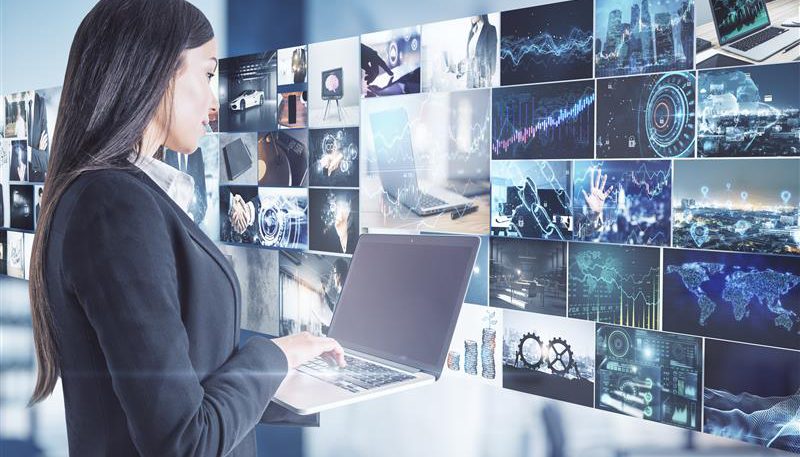Over the past decade, technology has played a pivotal role in redefining the movie theater experience transforming both the viewing experience and the business operations of the industry. The experience has evolved significantly over the years due to advancements in technologies like Generative AI, Virtual Reality, and Data Analytics.
The rise of OTT platforms and home theaters that provides an experience of bringing the comfort of a theater-like set-up into homes has become a challenge for movie theaters, compelling them to provide unique, high-value experiences that cannot be recreated at home. To address these challenges, movie theaters are investing in technologies that would make the experience more interactive and engaging.
The integration of technologies like 4DX, IMAX and Dolby Vision has transformed the movie-going experience into an immersive and multi-sensory journey. The implementation of 3D was a game-changer, which became very popular in the late 2000s. It revolutionized the way movies were experienced by making the on-screen world more real and tangible.
From the lens of viewer engagement, the movie-going experience can be broadly classified into two categories – multi-sensory experience and visual experience.
Multi-Sensory Experiences
4DX is a cutting-edge cinematic technology that provides a multi-sensory experience that has integrated motion seats and environmental effects that are in sync with the actions on-screen.
- Motion seats: Also known as D-BOX seats, these are seating systems that move and vibrate in sync with the on-screen action. These seats are programmed to match the scenes of the movie to ensure they align perfectly with the audio and visuals, which can tilt, rotate, vibrate and also simulate actions like flying & driving. These seating systems aim to enhance the viewing experience and offer adjustable intensity levels, allowing the viewers to choose how much movement they want. Motion seats have been a revolutionary addition to the theater industry, enabling audiences with an unforgettable and immersive experience.
- Environmental effects: These effects go beyond audio and visual effects, creating a multi-sensory experience for the audience. The theater can simulate rain, wind and even snow, fully immersing the audience in the setting of the film. If there’s a storm on the screen, an audience can feel gusts of wind or light sprays of water. They are designed to synchronize with the on-screen action and make the audience feel like they are a part of the movie. Along with creating environmental effects, the 4DX theaters also have scent emitters that release specific smells like burning rubber or ocean breeze, making the experience more personal and realistic.
- Audience Customization: Viewers can adjust the intensity or turn off the motion seats. They also have a choice of adjusting the levels of motion to high, medium, or low. The theaters also allow viewers to control the speed or intensity of the air gust. The theaters use an app or remote-like devices that would allow viewers to customize their preferences before or during the screening. During the ticket booking, audiences can select their desired customization options, which are pre-configured for the seat.
Visual Experiences
The visual experience in theaters has been revolutionized by the advancements in display technologies like IMAX and Dolby Vision to offer richer, sharper and more immense imagery.
- IMAX: IMAX theaters are known for their large screens and high-resolution 3D technology. They are much larger than the standard theater screens and go a long way in creating an immersive movie-watching experience. The projection systems use dual-laser or xenon projectors for ultra-high resolution and brightness which can project resolutions up to 12K in specific theaters.
- Dolby Vision: Dolby Vision is a premium HDR format that enhances contrast and brightness to make scenes appear more vibrant and lifelike. This technology offers a richer, immersive visual experience that captivates the audience by enhancing the imagery to make it more realistic.
These innovations have enhanced every aspect of the movie-going journey and have created an immersive and engaging experience. By offering a cinematic experience that cannot be replicated at home, theaters have re-established themselves by drawing the audiences back despite the rise of OTT platforms and home theaters.
Augmenting Immersive Experiences with Personalization
Along with providing an immersive movie-watching experience, it is important to provide a personalized customer experience as well. From the moment a customer considers watching a movie to the time they leave the theater, technology plays a crucial role in enhancing every aspect of the experience. Understanding the various phases of this journey is essential for delivering a tailored approach that resonates with the audience.
The customer experience can be broken down into five stages: pre-purchase, purchase, on-site experience, post-show, and post-visit.
- Pre-purchase stage: To overcome challenges like decision fatigue, machine learning algorithms are used to analyze user data, like viewer history and preferences, to provide tailor-made movie suggestions.
- Purchase stage: There are high chances of cart abandonment due to technical glitches. Leveraging user experience design principles to provide a seamless checkout process can make a significant impact. Features such as pre-filled information and personalized seating suggestions based on past behavior can enhance the overall customer experience.
- On-site experience: Customers often face difficulties finding their screens or amenities. Integration of augmented reality into a mobile app can help provide real-time navigation assistance and location-based services. By offering personalized food and beverages recommendations to customers, theaters can significantly elevate the movie-going experience by creating a convenient and enjoyable experience.
- Post-show: Implementing automated post-show surveys, loyalty programs, follow-up communications and updating customers with merchandise offers can shape the overall experience to nurture long-term loyalty.
- Post-visit: Proactive reputation management is crucial in building customer trust. Online review monitoring tools help track customer reviews, allowing theaters to address negative feedback, which can help build trust among customers.
By continuously evolving and focusing on both technological advancements and customer-centric strategies, theatres can maintain their unique appeal in an increasingly digital world. This approach ensures that movie theatres remain a destination for captivating, high-value entertainment experiences.
We at Happiest Minds provide digital solutions that deliver personalized customer experiences, such as AI-powered cinematic enhancements to elevate the movie-going experience. By leveraging cutting-edge technologies, we gain insights into customer behavior to tailor offerings effectively and enhance engagement through a user-friendly interface. Our solutions include features like digital ticketing and receipts, contactless ordering, and self-check-in to improve safety and hygiene, while focusing on sustainability.
As a technology partner for a major cinema chain, we have gained valuable insights into the industry’s dynamics. If you are interested in exploring strategic consulting to accelerate growth in this exciting landscape, we invite you to connect with us. Together, we can leverage the power of technology to create engaging, personalized cinema experiences that captivate audiences and build long-lasting loyalty.

is an Associate Director in Media and Entertainment Domain of Product & Digital Engineering Services at Happiest Minds Technologies Limited. He has 14+ years of extensive experience in digital transformation and Product Engineering. Shantanu is passionate about Product Management, New technologies and GTM strategies.







